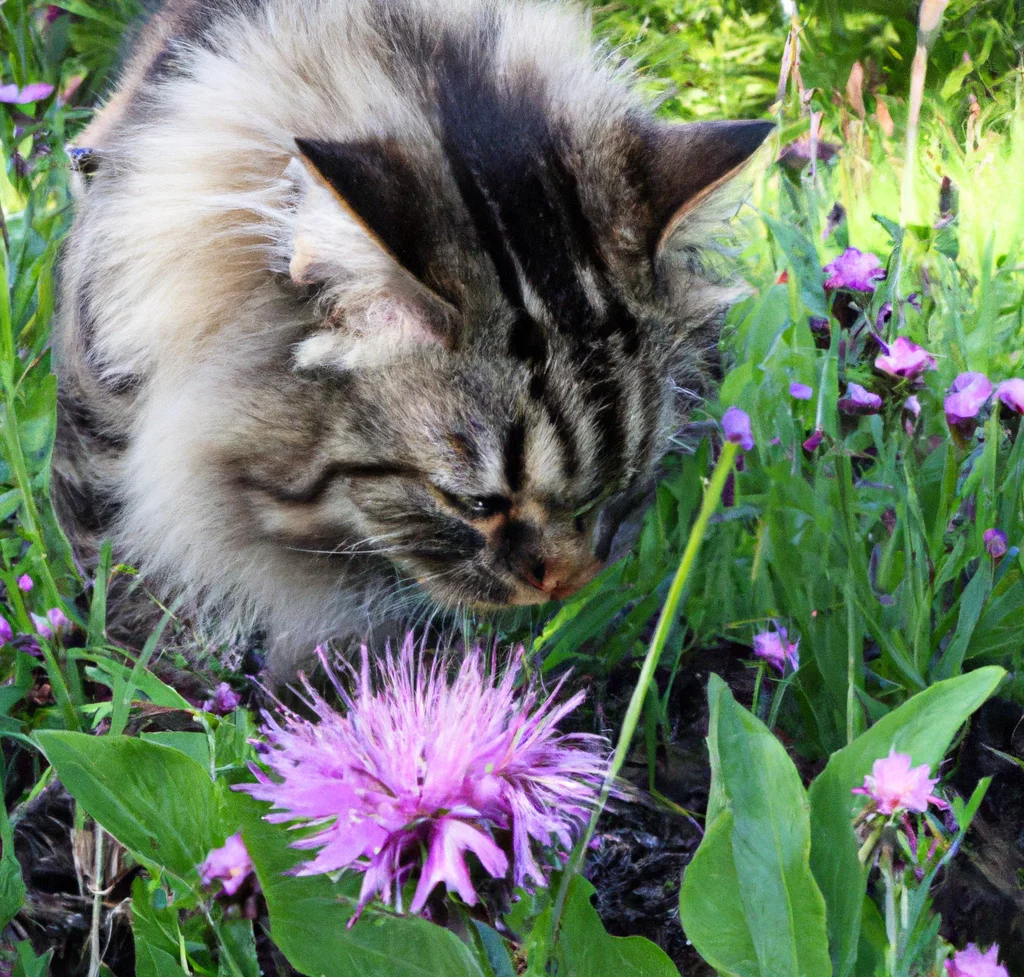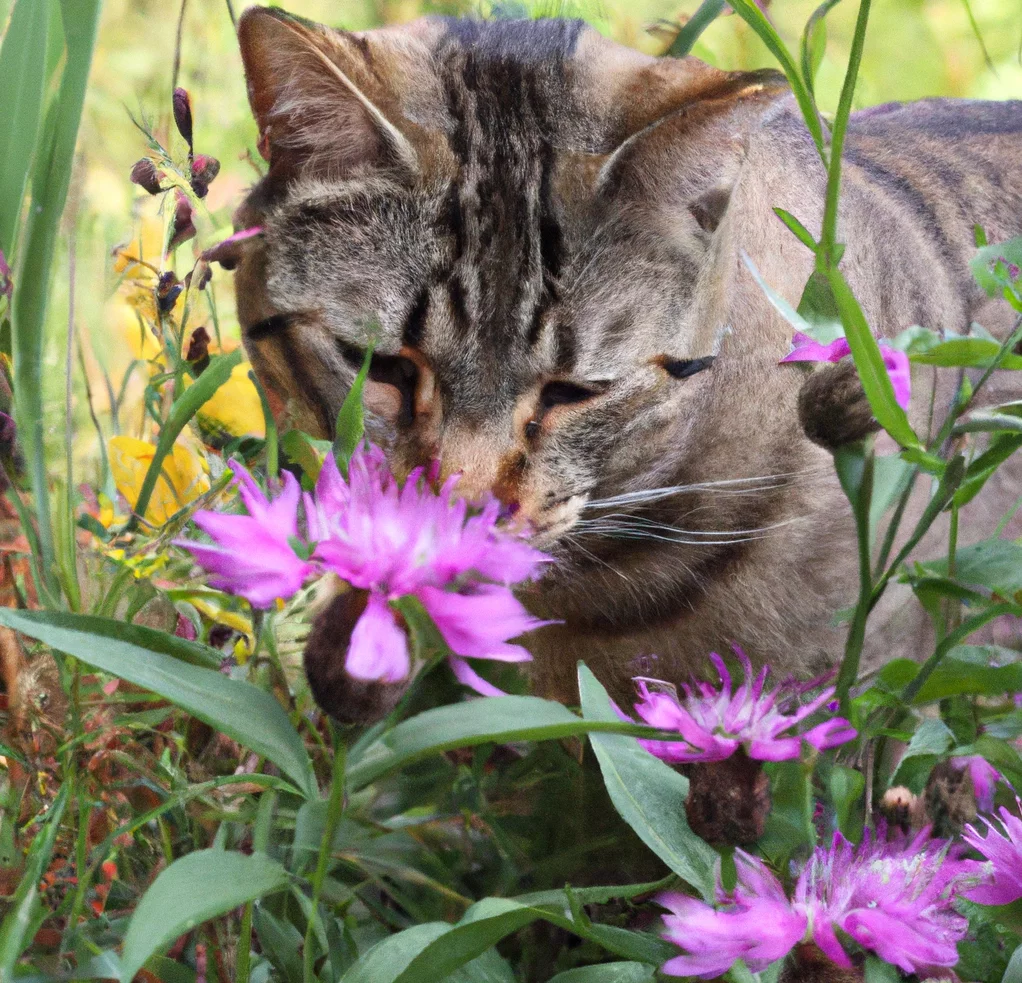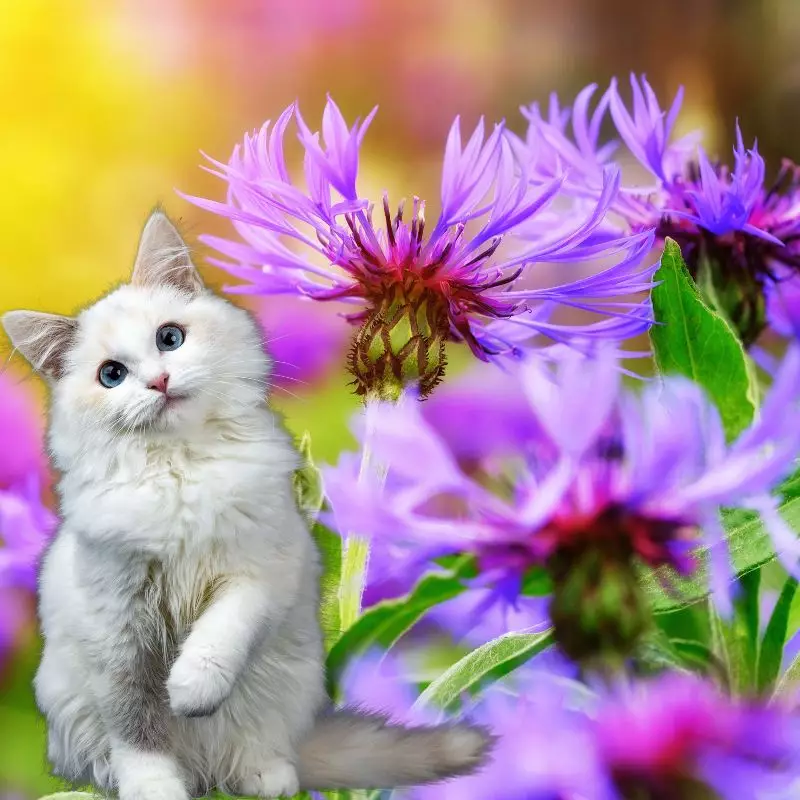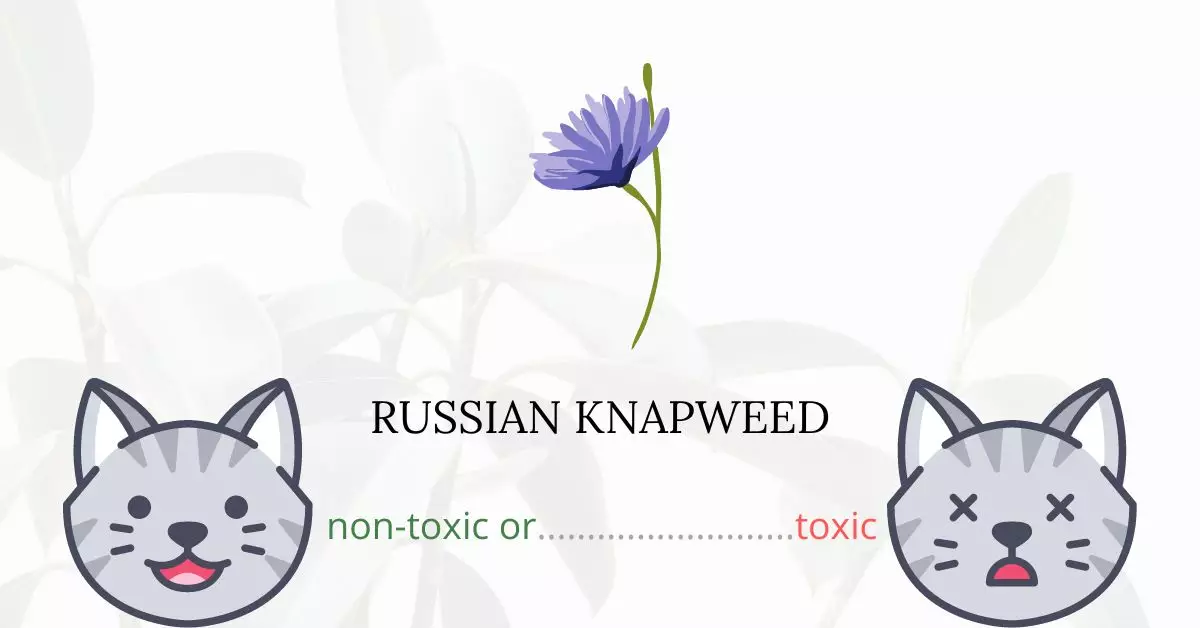Russian Knapweed is not toxic to cats. This perennial plant is recognized as non-toxic by reputable authorities such as the ASPCA (American Society for the Prevention of Cruelty to Animals) and PetMD.
This article has been curated in collaboration with a team of experienced DVMs (doctors of veterinary medicine). Their invaluable contributions ensure that we provide accurate and current information about the potential risks various plants, including Russian Knapweed, might have on cats. While there is no known harmful substance in Russian knapweeds that can endanger cats, it is always prudent to be cautious; just because a plant is classified as non-toxic doesn’t mean cats should consume it freely.
Can Cats Eat Russian Knapweed?

As long as your cats will only consume a small amount of Russian knapweed, it will not cause danger. Since cats are carnivorous animals, it is essential to remember that they should not eat excessive amounts of plants. Too many plants can cause cats to have indigestion.
Cats should not be allowed to munch on plants regularly as their stomachs are not capable of digesting plants. An upset stomach may induce signs of vomiting, diarrhea, and abdominal pain. These ailments though will go away once the cat has ejected the plants from its body.
What is Russian Knapweed?

Russian knapweed is a bushy rhizomatous perennial that can grow to be up to 80 cm tall. Its stems and leaves are finely arachnoid-tomentose, eventually becoming glabrous and green. The rosette leaves are oblanceolate, 2-3 cm wide by 3-8 cm long, and pinnately lobed.
The lower cauline leaves of Russian knapweed are smaller, pinnately lobed; the upper leaves become much reduced, sessile, serrate to entire. The heads are numerously terminating the branches. Russian knapweed flowers range from pink to purplish, with the margins remaining small.
Russian knapweed is a plant native to Eurasia. It has also been distributed to other parts of the world, most notably in Western America.
Keeping Cats Away From Russian Knapweed

Positioning your plants to keep your cats away is important. Try placing smaller plants in decorative bird cages. This method works well for cats who enjoy knocking plants off window sills and shelves. You can simply detach the cage’s top from its base, place one or more plants inside, and then secure the top. Hang the cage from a hook or curtain rod for added safety.
Trying to make your houseplants taste unpleasant might stop your cat from chewing them. Spray the stems, tops, and bottoms of the leaves lightly with bitter spray, and then allow them to air dry. Reposition each plant to its usual location and watch your cat’s behavior when it tries to bite a leaf.
Cats despise getting wet. When you notice cats approaching or nibbling on your plants, you can spray them with water to make them aware that they should stop what they are doing.
An alternative is to learn how to deter cats with plants. You can choose to include plants that cats are known to avoid because they are not tasty or attractive to them. For example, some plants, like the scaredy-cat plant (Coleus Canina), release odors that cats find repulsive.
Plants to Avoid For Your Cats
If you are a cat owner and unsure if the plants growing in your yard are harmful to your cats, check out this list of toxic plants for cats. You can also check our list of non-toxic plants for cats.





